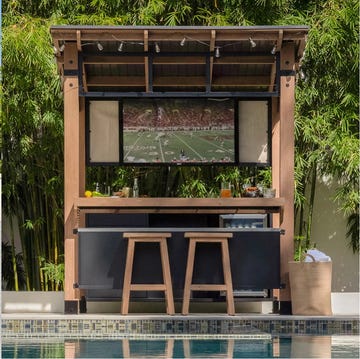There are many protein myths, but one thing is certain: Your body needs the complex molecules to function, and many of us aren’t getting enough. It’s a key macronutrient (along with carbohydrates and fats), and including enough in your daily diet helps keep you feeling nourished and satisfied. Ahead, nutritionists share the top signs that you’re not getting enough protein.
Meet the experts: Cara Harbstreet, M.S., R.D., L.D., a registered dietitian and owner of Street Smart Nutrition; and Lauren Harris-Pincus, M.S., R.D.N., author of The Protein-Packed Breakfast Club
But first, what is a protein? It’s made up of amino acids, which Cara Harbstreet, M.S., R.D., L.D., a registered dietitian and owner of Street Smart Nutrition, previously called the “building blocks of life.” The National Institute of Health’s National Library of Medicine explains that proteins are big, complex molecules that do so many important things in the body, like most of the work in the cells, and they “are necessary for the structure, function, and regulation of our body’s tissues and organs.”
Signs you’re not getting enough protein
If you feel like your life force is being drained—feeling hungry and unsatisfied between meals or finding it difficult to recover after workouts or a bout of illness—you might be lacking the key nutrient, Lauren Harris-Pincus, M.S., R.D.N., author of The Protein-Packed Breakfast Club, also told Prevention. If you are getting enough protein in your diet, you should feel satisfied and full after and between meals, and feel confident in your body’s ability to bounce back post-workout.
If you’re not sure exactly how many grams of protein you need to consume each day, Harbstreet says it’s best to consult a registered dietitian, as there’s no one-size-fits-all approach. Your protein and caloric intake vary based on age, gender, body weight, lifestyle, and activity level. Harbstreet says your protein intake can range from 10 to 15 grams per snack, and up to more than 30 grams per meal, depending on these factors.
“As a point of reference, when building a well-balanced meal, aim for ¼ of the plate to contain lean protein, ¼ whole grains, and ½ fruits and veggies,” Harris-Pincus added.
How to get more protein in your diet
Luckily, there are so many nutritious, protein-packed meal prep recipes and healthy, high-protein snacks to help you meet your goals.
Starting with breakfast is a great idea because it’s “the time of day that’s more difficult for people to reach the minimum recommended 20 grams of protein,” according to Harris-Pincus. She recommends oatmeal with ultra-filtered milk and Greek yogurt on top; a cottage cheese parfait with fruit and pistachios; overnight oats with ultra-filtered milk, Greek yogurt, chia seeds, fruit, and nuts; or scrambled eggs with cottage cheese stirred in.
If you’re looking for specific protein-packed recipes, check out some of our favorites below.

Shannen Zitz is an Assistant Editor at Prevention, where she covers all things lifestyle, wellness, beauty, and relationships. Previously the Editorial Assistant at Prevention, she graduated from the State University of New York at Cortland with a bachelor's degree in English. If she’s not reading or writing, you can probably find her frequenting the skincare and makeup forums on Reddit or hogging the squat rack at the gym.












